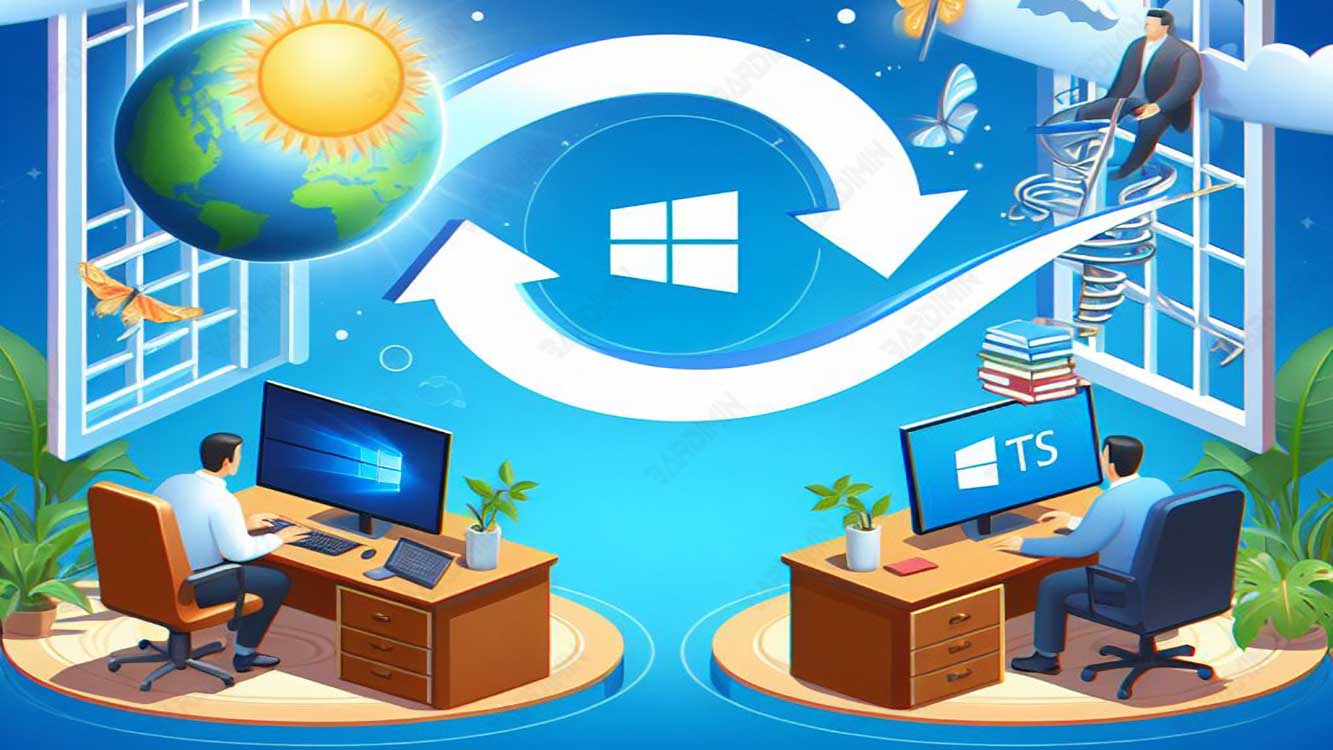Do you want to move your Windows license to a new PC? Are you confused about how to do it without breaking Microsoft rules? Are you worried about losing your data or applications when making a transfer? If your answer is yes, then this article is for you.
In this article, Bardimin will explain how to transfer Windows licenses to a new PC easily and safely. Bardimin will discuss some important things you need to know before making a transfer, such as the type of Windows license, transfer terms and restrictions, and how to check your Windows activation status.

Bardimin will also provide detailed steps to perform a Windows license transfer using a different method, such as through a Microsoft account, phone, or third-party software. In addition, Bardimin will provide tips and tricks to ensure the transfer goes smoothly and without problems.
Windows License Type
Before you can perform a Windows license transfer, you need to know what type of Windows license you have. There are two main types of Windows licenses, namely OEM and Retail.
- OEM (Original Equipment Manufacturer) is a Windows license pre-installed on a PC or laptop that you purchased from a manufacturer, such as Dell, HP, Lenovo, or Asus. OEM licenses are permanent and cannot be transferred to another PC. If you’re replacing a PC or an important component like a motherboard, you’ll need to purchase a new Windows license. OEM licenses are usually less expensive than Retail licenses but have limitations in terms of support and personalization.
- Retail is a Windows license that you purchased separately from Microsoft or another authorized reseller. Retail licenses are flexible and can be moved to another PC, provided you only use them on one PC at a time. If you replace a PC or critical component, you can transfer your Retail license to a new PC without having to purchase a new license. Retail licenses are usually more expensive than OEM licenses but have advantages in terms of support and personalization.
You can check your Windows license type by using the command slmgr -dli in Command Prompt. You’ll see information about your Windows edition, version, and license type. If you see RETAIL in the Description, you have a Retail license. If you see OEM in the Description section, you have an OEM license.
Windows License Transfer Terms and Restrictions
If you have a Retail license, you can transfer your Windows license to a new PC by meeting the following terms and restrictions:
- You can only transfer a Windows license to a PC that has the same or lower operating system than your Windows license. For example, if you have a Windows 10 Pro license, you can make the transfer to a PC that has Windows 10 Home or Windows 10 Pro, but not to a PC that has Windows 10 Enterprise or Windows 11.
- You must remove the Windows license from the old PC before making the transfer to the new PC. You can do this by using the command slmgr -upk in Command Prompt. This command removes the Windows product key from the old PC and makes it inactive. You can also remove your Microsoft account from your old PC if you connected it with your Windows license.
- You must activate the Windows license on the new PC within 30 days of making the transfer. You can do this by using the same Windows product key that you used on your old PC, or by associating your Microsoft account with your Windows license. You can also contact Microsoft Customer Service if you’re having trouble activating your Windows license on a new PC.

